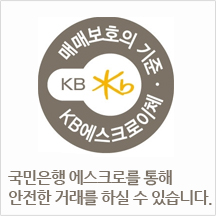The 9 Things Your Parents Teach You About SCHD Dividend Ninja
페이지 정보

본문

Unveiling the SCHD Dividend Ninja: A Comprehensive Guide to the Schwab U.S. Dividend Equity ETF
Investing in dividend-paying stocks can be an excellent strategy for creating passive income. One car that has actually gotten considerable popularity amongst those seeking constant dividends is the Schwab U.S. Dividend Equity ETF, typically referred to as SCHD. In this blog post, we will take a deep dive into the SCHD, its structure, advantages, and how it stands apart in the financial investment landscape as what lots of call the "Dividend Ninja."
What is SCHD?
The Schwab U.S. Dividend Equity ETF (SCHD) intends to track the performance of the Dow Jones U.S. Dividend 100 Index. This index is comprised of high dividend yielding U.S. stocks with a strong record of revenues and dividend growth. Launched in October 2011, SCHD has rapidly become a preferred amongst income-focused financiers due to its tactical selection of U.S. business that embody financial strength and stability.
Secret Features of SCHD
- Expense Ratio: At simply 0.06%, SCHD provides an affordable financial investment option compared to lots of actively managed funds.
- Yield: As of the most recent information, SCHD's distribution yield hovers around 3.5%, which is considerably greater than the average S&P 500 yield.
- Historical Performance: Over the years, SCHD has demonstrated resilience and growth, outperforming numerous comparable funds in both yield and price gratitude.
Why Choose SCHD?
Diversity: SCHD provides investors with exposure to a diverse set of sectors, decreasing the risk related to single-stock investments.
Tax Efficiency: ETFs are usually more tax-efficient than mutual funds since they can prevent setting off capital gains taxes through their distinct structure.
Consistent Income: SCHD concentrates on business with established histories of dividend payments, making it a trusted option for income-seeking investors.
SCHD's Composition
To understand the efficiency of SCHD as a dividend investment, it's important to examine its present holdings.
| Top 10 Holdings | Weight |
|---|---|
| 1. Apple Inc. (AAPL) | 4.2% |
| 2. Microsoft Corp. (MSFT) | 4.1% |
| 3. Coca-Cola Co. (KO) | 3.8% |
| 4. PepsiCo Inc. (PEP) | 3.5% |
| 5. Home Depot Inc. (HD) | 3.4% |
| 6. Pfizer Inc. (PFE) | 3.3% |
| 7. Broadcom Inc. (AVGO) | 3.2% |
| 8. Johnson & & Johnson (JNJ) | 3.1% |
| 9. Merck & & Co. (MRK) | 3.0% |
| 10. 3M Co. (MMM) | 2.9% |
(Please note: The weights might vary based on market conditions and the fund's rebalancing process.)
Historical Performance
Examining the efficiency of SCHD over a multi-year horizon can offer insight into its possible as a long-term financial investment.
| Year | Cost Return (%) | Dividend Return (%) | Total Return (%) |
|---|---|---|---|
| 2016 | 12.2 | 3.5 | 15.7 |
| 2017 | 18.3 | 3.5 | 21.8 |
| 2018 | -3.0 | 3.6 | 0.6 |
| 2019 | 23.7 | 3.6 | 27.3 |
| 2020 | 7.0 | 3.5 | 10.5 |
| 2021 | 24.0 | 3.3 | 27.3 |
| 2022 | -0.7 | 3.7 | 3.0 |
(Note: Past efficiency does not ensure future outcomes.)
Benefits of Investing in SCHD
Buying SCHD features many benefits:
- Low Expense Ratio: Investors can keep more of their earnings due to SCHD's very little fees.
- High Dividend Growth: Historically, SCHD's dividends have increased, lining up with its concentrate on business with sustainable payment practices.
- Quality Holdings: The ETF screens for companies with strong basics, reducing the possibility of dividend cuts.
- Versatility: The liquidity of ETFs enables investors to trade SCHD shares throughout the day, making it a flexible financial investment choice.
Downsides of SCHD
While SCHD is an attractive option, it's necessary to think about prospective downsides:
- Market Risk: Like all equities, SCHD is subject to market fluctuations and can experience volatility.
- Concentration Risk: While varied, high allotments in particular sectors can lead to performance concerns if those sectors underperform.
- Rate Of Interest Sensitivity: As rate of interest rise, dividend-paying stocks can become less appealing, leading to prospective decreases in rate.
Often Asked Questions (FAQ)
1. Can I hold SCHD in a retirement account?
Yes, SCHD can be held in numerous pension, consisting of IRAs and 401(k) plans, providing tax benefits on dividends.
2. How typically does SCHD pay dividends?
SCHD typically pays dividends on a quarterly basis, making it an ideal choice for those seeking regular income.
3. What is the minimum financial investment required to buy SCHD?
The minimum investment is equivalent to the cost of one share of SCHD, which can differ in the marketplace.
4. Does SCHD reinvest dividends automatically?
Numerous brokerage platforms use a Dividend Reinvestment Plan (DRIP), allowing dividends to be automatically reinvested into buying more shares of SCHD.
5. How is SCHD managed?
SCHD is passively managed, tracking the efficiency of the Dow Jones U.S. Dividend 100 Index, meaning that financial investments are picked based upon index requirements instead of active selection.
The schd dividend ninja (www.anibaltwigg.top writes) exemplifies a disciplined investment strategy concentrating on income generation and growth. With its low expense ratio, strong historical performance, and focus on quality dividend-paying business, it's no surprise that SCHD has caught the attention of income-focused investors. By combining the principles of dividend income with a diversified portfolio, SCHD stands as a formidable alternative for those aiming to enhance their investment toolkit.
Investing always carries risks, and private financial scenarios can vary significantly. As with any investment decision, possible investors should carry out extensive research study and think about speaking with a monetary consultant to tailor techniques that meet their specific objectives and risk tolerance.
- 이전글13 Things You Should Know About Car Replacement Keys That You Might Not Have Known 25.10.08
- 다음글ดอกไม้งานศพ: สัญลักษณ์แห่งความเศร้าโศกและการระลึกถึง 25.10.08
댓글목록
등록된 댓글이 없습니다.


